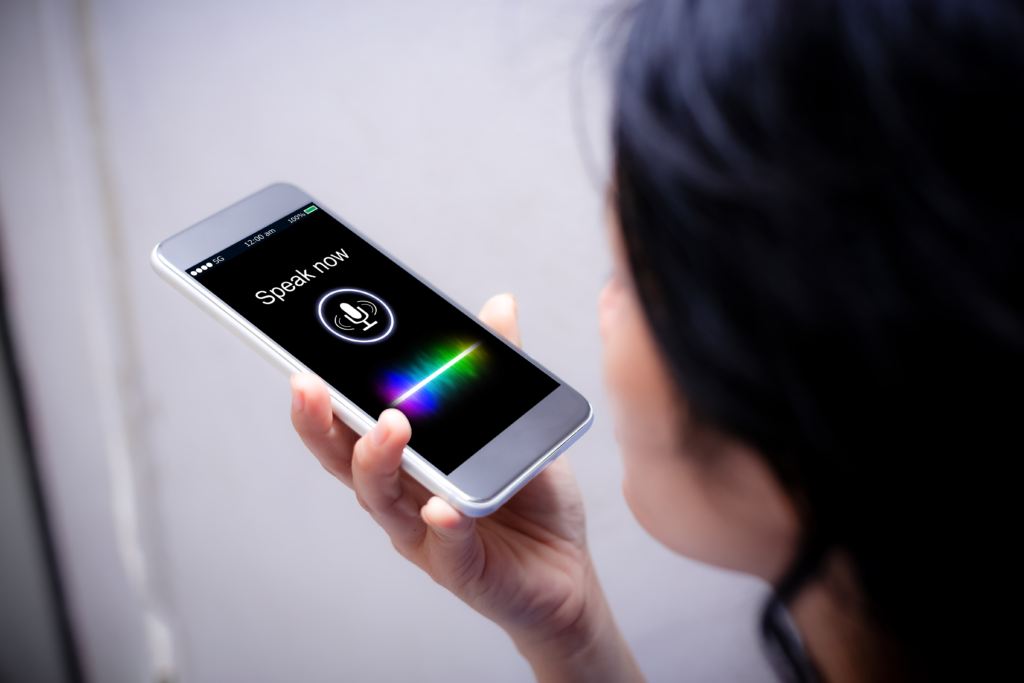Web Design for Voice-First Experiences: Creating Engaging Voice User Interfaces

In today’s technologically advanced world, where voice assistants like Siri, Alexa, and Google Assistant have become an integral part of our daily lives, designing websites for voice-first experiences has become more crucial than ever. At Digital Web London, we understand the significance of crafting user-friendly and immersive voice UI designs that cater to the growing demand for seamless voice interactions. In this blog post, we will delve into the essentials of web design for voice-first experiences, exploring its benefits, principles, and best practices.
What exactly is Voice Search?
The capacity to speak to gadgets, have them recognise your voice command, and act on it is known as voice interaction. You’ve probably seen the commercials that ask, “Alexa, precisely how do I make pasta?” This is an example of voice search—the user asks Alexa to run a search, and she answers with relevant results.
When we compared voice search to text search, we can see that voice search yields a different set of results. Individuals who use voice search expect rapid results because they generally conduct the search while undertaking other duties such as cooking, driving, exercising, and so on.
Understanding Web Design for Voice-First Experiences:
Web design for voice-first experiences involves creating intuitive and engaging interfaces that facilitate interaction through voice commands and responses. This approach enhances user accessibility and convenience, providing a hands-free and natural way for users to navigate and interact with websites.
Benefits of Web Design for Voice-First Experiences:
- Enhanced Accessibility: Voice-based interactions remove barriers for individuals with visual impairments or physical disabilities, making websites more inclusive and accessible to a wider audience.
- Improved User Engagement: Voice interactions enable users to engage more naturally and effortlessly with a website, enhancing user satisfaction and increasing the time spent on the site.
- Seamless Multitasking: Voice-first experiences allow users to perform tasks on the web while keeping their hands and eyes free for other activities, enabling efficient multitasking.
- Brand Differentiation: By embracing voice UI design, your website can stand out from the competition, showcasing your commitment to innovation and user-centric experiences.
Principles of Effective Web Design for Voice-First Experiences:
- Conversational Tone: Designing a voice-first website involves adopting a conversational tone that mirrors human interactions. Use clear and concise language, avoiding jargon or complex terms that might confuse users.
- Contextual Awareness: Understand the context in which users interact with your website and tailor the voice interactions accordingly. Anticipate user needs and provide relevant and personalized responses.
- Clear Navigation: Ensure that your voice UI design offers intuitive and straightforward navigation, allowing users to move seamlessly through your website using voice commands.
- Error Handling: Design a robust error handling system that provides helpful guidance when a user’s voice command is misunderstood or a request cannot be fulfilled. Offer alternative suggestions or options to redirect users back on track.
Best Practices for Web Design for Voice-First Experiences:
- Keyword Optimization: Incorporate relevant keywords like “web design for voice-first experiences” strategically throughout your website to enhance search engine visibility and improve organic rankings.
- Voice-User Interface Testing: Regularly conduct thorough testing of your voice UI design to identify and rectify any usability issues, ensuring a seamless and frustration-free user experience.
- Device Compatibility: Optimize your website’s voice UI design to work seamlessly across various voice-enabled devices, such as smartphones, smart speakers, and other IoT devices.
- Continuous Iteration: Keep evolving your voice-first design strategy by staying updated with the latest trends and user preferences. Regularly gather feedback from users to refine and enhance your voice UI design.
How can you test UI design with your voice?
There are multiple measures you may take that will make your web page more “conversational.” One of the initial duties for designers and developers to do is to consider the many sorts of voice dialogue that websites and applications may offer.
Instead of incorporating voice recognition into your website, you might create additional Amazon Alexa “skill” for an item similar to the Echo. Several companies have put resources into this technology so that users may check their balance on their smart speaker, similar to a mobile phone, unlike opening a laptop and being logged into a website.
You can design customer journey maps in collaboration with your clients to determine the type of voice experience you need to provide for them. This recurrent customer-to-customer interaction map will help you identify areas where voice interaction could fit into your business.
For instance, if customers are frequently inquiring about the business or its services, a FAQ page with a chat bot that can answer to voice enquiries may be the best option.
The Difficulties of Voice User Interfaces
Challenges are unavoidable in any undertaking. By solving these challenges, we can improve the behaviour of VUIs and evolve their incorporation into our daily life.
Here are a few of the most significant issues posed by VUIs:
- Privacy concerns: They constantly listen and can cause consumers to be concerned about their privacy, particularly when it comes to data collecting and storage.
- Noise interference: Surrounding noise and interference might disrupt the conversation, making it hard for the gadget to effectively read human input.
- Limited functionality: Some operations or tasks made possible by Graphical User Interfaces will be more difficult to complete, especially those requiring complex visual interactions.
Conclusion:
Designing websites for voice-first experiences presents a unique opportunity to create intuitive and user-friendly interfaces that cater to the growing demand for voice interactions. At Digital Web London, we are passionate about crafting exceptional voice UI designs that elevate user experiences. By adopting the principles and best practices discussed in this blog post, you can optimize your website for voice-first experiences and position your brand at the forefront of this technological revolution.

